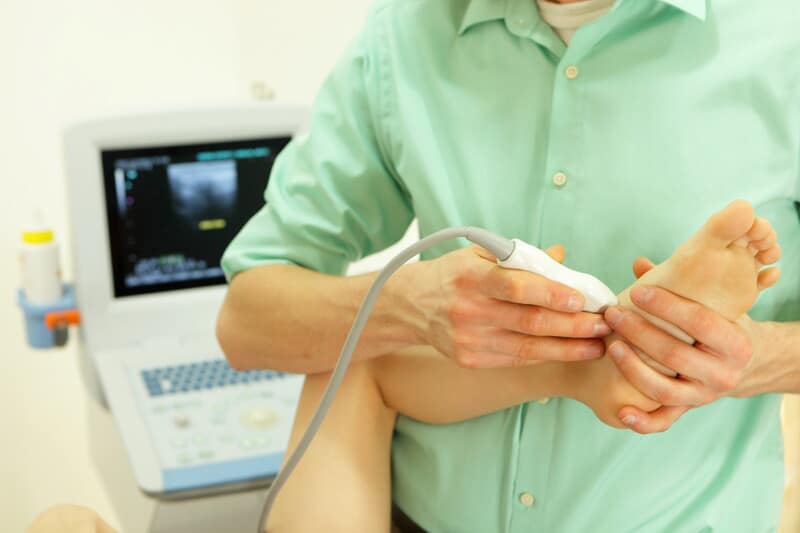Every year on January 1, the American Medical Association publishes a new set of Current Procedural Terminology. The majority of the changes for podiatry practices this year are due to new guidance language rather than code additions, deletions, or edits. Before we get into the Podiatry CPT Coding Updates for 2022, let’s first define podiatry care.
Podiatry’s Role in Healthcare
Podiatry is the study and treatment of foot diseases, injuries, and deformities. It is concerned with the diagnosis, medical treatment, and surgical treatment of foot, ankle, and lower extremity problems. Mechanical and physical therapies are available in addition to medical and surgical treatments. Podiatry, like other disciplines, relies on regular collections to survive and prosper.
On the other hand, coding in podiatry is complicated due to multiple procedures performed on the same structure or organ, each requiring a different code.
The Current Procedural Terminology adds the following clarification for 2022:
“All services that appear in the Musculoskeletal System section include the application and removal of the first cast, splint, or traction device when performed. Supplies may be reported separately.”
Several third-party payers, including Medicare, have long followed this guidance, which applies to all CPT codes, regardless of payer.
This advice is consistent regardless of where you receive your services. The CPT code representing the cast application should not be submitted if the triple arthrodesis is performed in the operating room.
Assume that any fracture care code, such as closed fracture treatment without manipulation, is submitted in an office setting. In that case, the CPT code associated with the cast application should be omitted.
Podiatrists managing fractures often have to decide whether to perform closed treatment with manipulation or closed treatment without manipulation of CPT codes.
The new language in the 2022 CPT code set clarifies what “manipulation” actually means when used in code descriptors in CPT. Manipulation is defined as: “reduction by the application of manually applied forces or traction to achieve satisfactory alignment of the fracture or dislocation.” Usually, this is referred to as closed reduction.
The CPT clarified the following codes for external fixation in 2022:
“Codes for external fixation are reported separately only when external fixation is not listed in the code descriptor as inherent to the procedure.”
Therefore,
providers can only submit CPT codes for external fixation. CPT does not include the use of external fixation in its primary procedure code descriptor.
The CPT code for a first metatarsophalangeal joint arthrodesis is as follows:
-
CPT 28750—Arthrodesis, great toe; metatarsophalangeal joint
Code descriptor doesn’t include external fixation in the list. Hence, the CPT code for the first metatarsophalangeal joint arthrodesis and the CPT code for the external fixation can both be submitted if external fixation is used.
In the case of an open reduction and internal fixation (ORIF) of a metatarsal fracture that is fixed with external fixation, the CPT code for the external fixation would be:
-
CPT 28485—Open treatment of metatarsal fracture, with or without internal or external fixation, each
This is listed in the code descriptor. Thus, if external fixation is used with this procedure, only the ORIF CPT code can be submitted; the external fixation CPT code cannot be submitted as well.
Foreign Body vs Implant
If a joint prosthesis becomes loose or isn’t functioning, is it considered a foreign body removal?
The CPT answers this question that has been asked for a while now.
The new language on page 525 of the CPT book for 2022, it states that:
“An object intentionally placed by a physician or other qualified health care professional for any purpose (eg, diagnostic or therapeutic) is considered an implant.”
“An object that is unintentionally placed (eg, trauma or ingestion) is considered a foreign body.”
“If an implant (or part thereof) has moved from its original position or is structurally broken and no longer serves its intended purpose or presents a hazard to the patient, it qualifies as a foreign body for coding purposes, unless CPT coding instructions direct otherwise or a specific CPT code exists to describe the removal of that broken/moved implant.”
Wound Repair
This year, a new language adds that when multiple products and/or techniques are used to close a wound, only one CPT code is required.
More information on wound repair can be found on page 106 of the 2022 CPT book, where it is stated that wounds treated with chemical cauterization, electrocauterization, or adhesive strips cannot be coded with wound repair CPT codes.
This year’s priority is the clarification of simple wound repair:
“Simple repair is used when the wound is superficial (eg, involving primarily epidermis or dermis, or subcutaneous tissues without significant involvement of deeper structures) and requires simple one-layer closure.”
Moreover, anesthesia and hemostasis should not be reported separately when combined to treat simple wounds.
These are just a few of the changes in the CPT codes for podiatrist practises in 2022. The podiatry providers who submit CPT codes should know the entire CPT code set or use experts who are familiar with it. From January 1, 2022, they should use the most current CPT code set.
Zee Medical Billing offers the highest level of performance for high-quality medical billing and coding. Save your money by outsourcing to a professional billing service.
For queries regarding Podiatry CPT Coding Updates for 2022
Call @ +1 (224) 999-6997
Or
Get a free no-sting attached billing services quote from ZEE Medical Billing for your practice.





